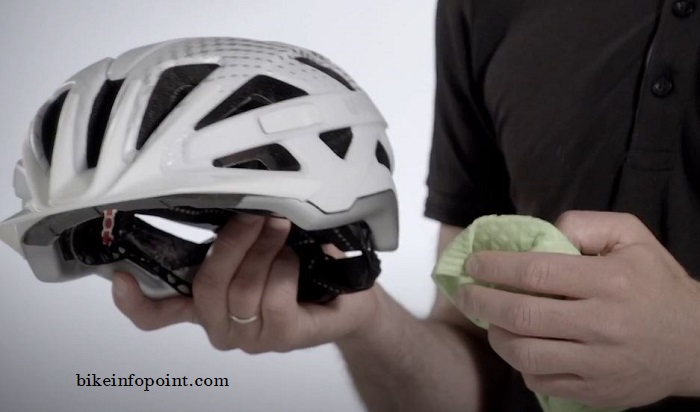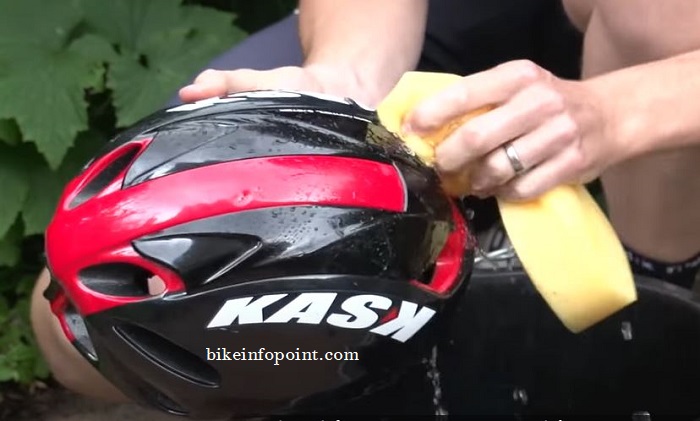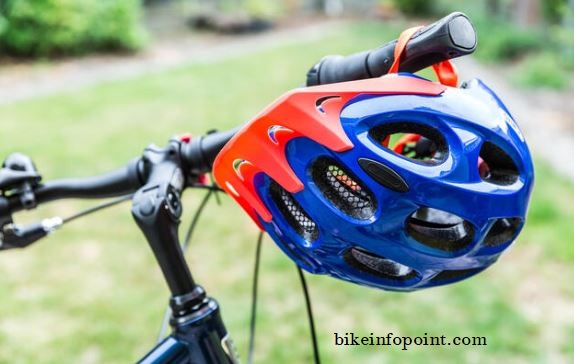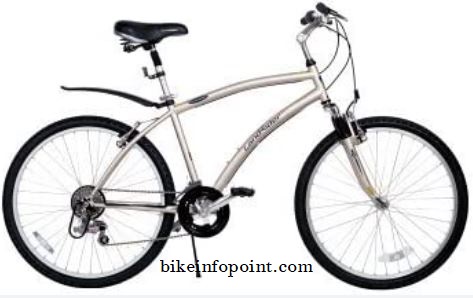
How to Clean Bike Helmet
A bike helmet is a crucial piece of safety equipment, designed to protect the rider’s head in the event of an accident. A dirty or poorly maintained helmet may not provide adequate protection and can even increase the risk of injury.
A dirty helmet can also harbor bacteria and odors. Which can be unpleasant and unhygienic. Regular cleaning of a helmet not only keeps it functioning at its best but also helps keep rider healthy and comfortable.
Proper cleaning and maintenance not only ensure that the helmet is ready for use when needed but also ensures that it lasts for a long time. A well maintained helmet can last for several years.
Table of Contents
ToggleRemoving Dirt and Debris

Use a soft brush or cloth to remove loose dirt and debris: The first step in cleaning a bike helmet is to remove any loose dirt and debris that may have accumulated on the surface. This can be done using a soft brush or cloth, such as a toothbrush or microfiber cloth. It’s important to use a soft brush or cloth to avoid scratching or damaging the helmet’s surface. Additionally, using a gentle brush or cloth is better to avoid pushing the dirt deeper into crevices or padding. Using a dry brush or cloth is recommended for this step. Because it will be easier to remove the loose dirt and debris.
Use mild soap and water to scrub away stubborn grime: After removing the loose dirt and debris, you’ll need to use mild soap and water to scrub away any stubborn grime. It is important to use mild soap because harsh detergents or chemicals can damage the helmet’s surface or damage padding. It can also affect the helmet’s performance in a crash.
Using warm water is also recommended as the grime may be easier to remove with warm water.
When cleaning, scrub the helmet gently. focusing particularly on the straps, padding and ventilation openings. Because these areas are more prone to accumulating dirt and grime. Rinse the helmet thoroughly with clean water and be sure to remove all soap residue to avoid any skin irritation.
It’s important to note that some helmet materials, like certain types of plastic, may not be suitable for this step. so it’s important to check the manufacturer’s instructions and recommendations before proceeding with cleaning.
Sanitizing the Helmet
Use a sanitizing solution or disinfectant: Helmet sanitization is important to kill any bacteria or germs. This can be a commercial product specifically designed for use on bike helmets or a general-purpose disinfectant like hydrogen peroxide or vinegar. Be sure to choose a product that is safe for use on the material of your helmet and that is appropriate for the level of cleaning that is needed.
Be sure to follow the instructions on the product: It is important to follow the instructions on the product to ensure that the helmet is properly sanitized. The instructions will typically specify how much of the solution to use, how long it needs to sit on the helmet and how to properly rinse it off. Some products may require the helmet to be rinsed thoroughly with water before being wiped down with a sanitizing solution. Others may be directly applied. So it is very important to read the instructions before using it.
Pay extra attention to the straps, padding and ventilation openings: When sanitizing the helmet, it’s important to pay extra attention to the straps, padding and ventilation openings. These areas tend to accumulate sweat, bacteria and dirt. Which can lead to odors and other issues. The straps, padding, and ventilation openings should be thoroughly cleaned, disinfected and rinsed to ensure that they are completely sanitized.
Drying the Helmet
Use a clean, soft cloth to gently pat the helmet dry: After cleaning and sanitizing the helmet, it’s important to dry it thoroughly before using it again. The best way to dry a bike helmet is to use a clean soft cloth to gently pat it dry. This will help to remove any excess water and prevent water spots from forming on the helmet’s surface. Using a lint-free microfiber cloth is recommended for this step as it will help to remove any water spots or stains that may have formed during the cleaning process.
Allow the helmet to air dry completely before using it again: It is important to let the helmet air dry completely before using it again. This will help to prevent any bacteria or mold from forming inside the helmet. Allow the helmet to dry in a cool and well-ventilated area, away from direct sunlight or high heat.
It is recommended to remove the padding and straps of the helmet during the drying process. This will help dry the inner part of the helmet completely and avoid unpleasant odors.

Maintenance and Storage
Store the helmet in a cool, dry place: Proper storage of a bike helmet is important to ensure its longevity and optimal function. A cool and dry place is the best location to store a helmet. As high heat or humidity can cause damage to the helmet’s surface or structure over time. It is also important to avoid storing the helmet in direct sunlight. Because this can cause discoloration or damage to the helmet’s surface.
Avoid leaving it in high heat: Leaving the helmet in high heat, like inside a car on a hot day, can cause the plastic materials of helmet to soften and warp. That can affect its performance in a crash and make it less effective in protecting the rider’s head. So it is important to keep the helmet in a cool and well-ventilated area.
Clean the helmet regularly to ensure its longevity and optimal function: Regular cleaning and maintenance are important to ensure the longevity and optimal function of a bike helmet. Cleaning the helmet on a regular basis will remove dirt and grime, kill bacteria and germs, and help to prevent odors from forming. It’s recommended to clean the helmet after every few rides or at least once a month if it is not being used as frequently.
By following these steps for cleaning, sanitizing, drying and storage as well as regular maintenance, riders can ensure that their helmets are functioning at their best and provide optimal protection in the event of an accident.
Regular cleaning and maintenance of your bike helmet are essential for its safety, longevity and protection of the helmet. By following the outline and tips provided you can effectively clean and maintain your helmet.


